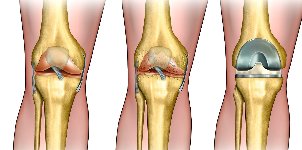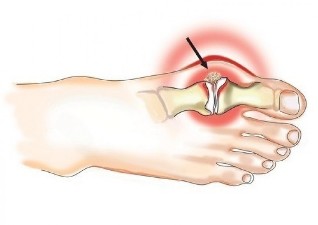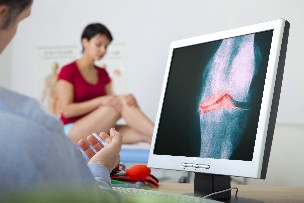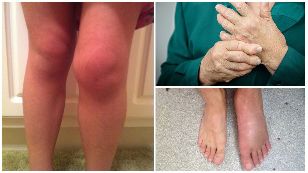Osteoarthritis – the collective name (snc dystrophic-a degenerative disease joint of the device in different locations and etiology, who, at the time of this same clinical and morphological picture and the exodus, and manifested by the defeat of the articular cartilage, bone, subchondral training, of capsules, of the ligamentous apparatus.

Osteoarthritis is the most common in the pathology of the rheumatology practice, according to the statistics of the health of their prey up to 1/5 part of the whole population. Osteoarthritis is the major cause to the reduction of the quality of life of approximately half of the patients, the majority of which are people with disabilities. The incidence is directly dependent on the age: osteoarthritis is rare in the young age, dbute most often after 40 to 45 years of age and in people over the age of 70 radiological signs are defined in the vast majority of cases. At a young age, the frequency of occurrence of approximately 6.5%, after 45 years of 14-15%, after 50 years of 27% to 30% in people over 70 years old, 80% to 90%.
Most often, when oa in the pathological process involved the small joints of the brush (for women 10 times more often than men), the thumb of the foot, of the inter-vertebral joint thoracic and cervical spine, as well as the knee and hips. Osteoarthritis of the knee and hip joints is the leader of the severity of the clinical manifestations and negative influences on quality of life.
For osteoarthritis (oa) is the overall characteristic of the defeat of the joints and accessories of devices:
- the inflammatory changes of the cartilage of the joint;
- involvement in the pathological process subject to the bone structures;
- synovitis – inflammation of the inner lining of the joint capsule;
- bursitis – the defeat of bags around the joints;
- reactive inflammation of the soft tissues (muscles, subcutaneous tissue, ligament of the unit), located in the projection involved in the joint.
Because the cause of osteoarthritis is the inflammatory changes in several western countries it is called the disease of arthritis. In the Russian federation medical terms arthritis and osteoarthritis also occur more often and involve the same disease process. Recently, in the rheumatology practice, the more often one uses the term osteoarthritis (oa), emphasizing the involvement in the disease process, not only the fitting, as a bearing connection, but by doing the training.
The consequences of osteoarthritis in the absence of an adequate treatment of economic a progressive reduction in the volume of movements in the affected joint, and immobilization.
At the present time, the approach to the understanding of osteoarthritis has changed dramatically: the disease is considered aggressive process of destruction of the cartilage of the joint under the influence of inflammation, which requires a therapy anti-inflammatory.
Synonyms: arthritis, osteoarthritis, osteoarthritis, osteoarthritis deforming.

Causes and risk factors
The scientific community is the controversy about the root causes of joint damage. Some researchers spend the main role of damage to the cartilage lining of the joints under the influence of various factors, which leads to a violation of the biomechanics of the joint and dystrophiquesm changes surrounding structures. Others, on the contrary, see the first cause in the defeat of the surface layer of the mating of bone structures formants of the joint (for example, by reason of the infringement of the microcirculation), and the secondary changes consider the dystrophy and degeneration of the cartilage.
The factors of causality, which is the most often caused the development of osteoarthritis:
- background traumatic acute damage to the joint (rupture or slight tearing of ligaments, damage, dislocation, fracture, intra-articular penetrating injuries);
- excessive and systematic expenses related to a specific activity (in athletes, dancers, individuals involved in the physical work, heavy, etc);
- obesity;
- the local impact of low temperatures;
- the chronic diseases suffered by the local microcirculation (endocrine pathology, pathology of the vascular bed, etc);
- deferred infectious diseases;
- hormonal changes (pregnancy, menopause);
- autoimmune diseases, involving damage to the connective tissue;
- connective tissue dysplasia (congenital weakness of this type of tissue, accompanied by increased mobility of the joints);
- genetic pathology – the abnormal gene, which is localized on chromosome 12 and encoder procollagen type II (COL2A1) or VDR gene control of the vitamin D-endocrine system;
- congenital structural and functional abnormalities joint of the device;
- mature, the elderly, and the caterpillars of age;
- bone loss (osteoporosis);
- chronic intoxication (including alcohol);
- deferred intervention on the joints.
In most cases, osteoarthritis is a poly-etiological nature, that is to say it develops when the use in conjunction of the impact of some causal factors.
The symptoms of osteoarthritis
For osteoarthritis (oa) is not characteristic of acute the clinical picture, change the seals bad omen progressive, slow-climbing, which is manifested by the gradual strengthening of the symptomatology:
- of the pain;
- periodically arising from the crisis in the affected joint;
- the deformation of the articulation, and appearing to be compounded by the development of the disease;
- stiffness;
- the limitations of the mobility (reduction of volume of assets and liabilities to movements in the affected joint).
The pain with the osteoarthritis of the gate dull the transient nature, appears when driving, on the background of the intensity of the load, at the end of the day (may be so intense that do not allow the patient to sleep). Constant, not of the mechanical nature of the pain of osteoarthritis atypical and reflects the presence of inflammation of the subchondral bone, the synovial membrane, the ligaments of the device or of the muscles and peri-articular).
Most of the patients takes note of the existence of the so-called starting pain occurring in the morning, after waking up or after a long period of inactivity, and of course in the context of motor activity. Many patients define this state, such as the need to develop "joint" or "diverge".
For osteoarthritis characteristic of morning stiffness, which is clearly the localization and the door of short duration (no more than 30 minutes), sometimes it is perceived by patients as "the feeling of the jelly" in the joints. Perhaps a sense of blockage, and leads to a stiffness.
During the development of a reactive synovitis of the main symptoms of osteoarthritis-align:
- the tenderness and elevated local temperature, defined by palpation of the affected joint;
- the permanent character of the pain;
- the increase of the joint in the extent swelling of the soft tissues;
- a progressive decrease in the amplitude of the movements.
For the oa feature to increase the articulation in the extent swelling of the soft tissues.

The diagnosis
The diagnosis of osteoarthritis is based on an evaluation of the data anamnestiques, characteristic of the manifestation of the disease, the results of instrumental methods of studies. Indicative of changes in general and biochemical blood tests for osteoarthritis are not typical, they only appear when the development of the assets of the inflammatory process.
The main tool of the method of diagnosis of osteoarthritis is the x-ray in the diagnosis of obscure cases recommended to undertake a ct scan or magnetic resonance computed tomography.
Osteoarthritis of the knee and hip joints is the leader of the severity of the clinical manifestations and negative influences on quality of life.
For more diagnostic methods:
- arthroscopy;
- ultrasound assessment of the thickness of the articular cartilage, synovium, the state of the joint capsules, the presence of fluid);
- scintigraphy (assessment of the status of bone tissue bone heads of the formants of the joint).
The treatment of osteoarthritis
The drug therapy:
- nonsteroidal anti-inflammatory drugs – the relief of pain and signs of inflammation during exacerbation;
- glucocorticosteroids hormones intra-articular injection introduction to treat the phenomena of synovitis; apply limited, in case of need, in the shortest possible time to eliminate the painful symptoms;
- antifermental the means (inhibitors of proteolysis) – prevent the progression of degenerative and degenerative processes in the cartilage and the bone tissue;
- the antispasmodics – helps eliminate muscle spasm local corrupted segment;
- the medicines to speed up the regeneration of damaged tissue;
- the drugs aimed at correcting the properties of the blood, strengthening the vascular wall, the strengthening of their elasticity and tissue regeneration – to help build the walls of the vessels of the microcirculation of the bed, ensuring the supply of blood adequate to the injured area;
- tools to improve the microcirculation;
- medication for the joints, in spite of their mass distribution in the treatment of arthritis, widely placebo-controlled clinical effectiveness of this group of drugs has not been proven.
Physiotherapy tools used for the treatment of osteoarthritis:
- massage technology regional muscles, improves the blood circulation and remove local spasm;
- active kinesiotherapy, that is to say, execution of exercises with oa, using simulators;
- physiotherapy with osteoarthritis;
- laser therapy;
- treatment by ultrasound;
- bathtubs, dirt, paraffin, etc.
The ineffectiveness of these methods, the impact, the presence of complications use of surgery for osteoarthritis:
- the decompression of the meta-epiphysis and prolonged to the inside of the bone of the blockade (decreased intraosseux the pressure in the affected area);
- corrective osteotomy;
- stent joint.
In the early stages of the disease apply mechanical, laser of the device (the smoothness of the surface of the damaged cartilage, the removal of non-viable sites). This effective method of pain management, but it is a temporary effect – 2-3 years.

The possible complications and consequences of the
The consequences of osteoarthritis, particularly in the absence of adequate treatment, are:
- a gradual reduction in the volume of movements in the affected joint;
- asset.
Forecast
Forecast favorable for life. The beneficiary and social work, the prognosis depends on the rapidity of diagnosis and the beginning of the treatment, decreases during tightening of the decision on the surgical treatment of the disease in case of need.
Prevention
- The refusal of intense stress, long static voltage of the affected joint.
- The port of orthotics if necessary.
- Compliance of the diet with oa, aimed at the reduction of the mass of the body.
- Avoid hypothermia.
- Complete the treatment of wounds of the joints until healing is complete is mandatory to rehabilitation.
- Clinical supervision at the onset of the signs of osteoarthritis.

































